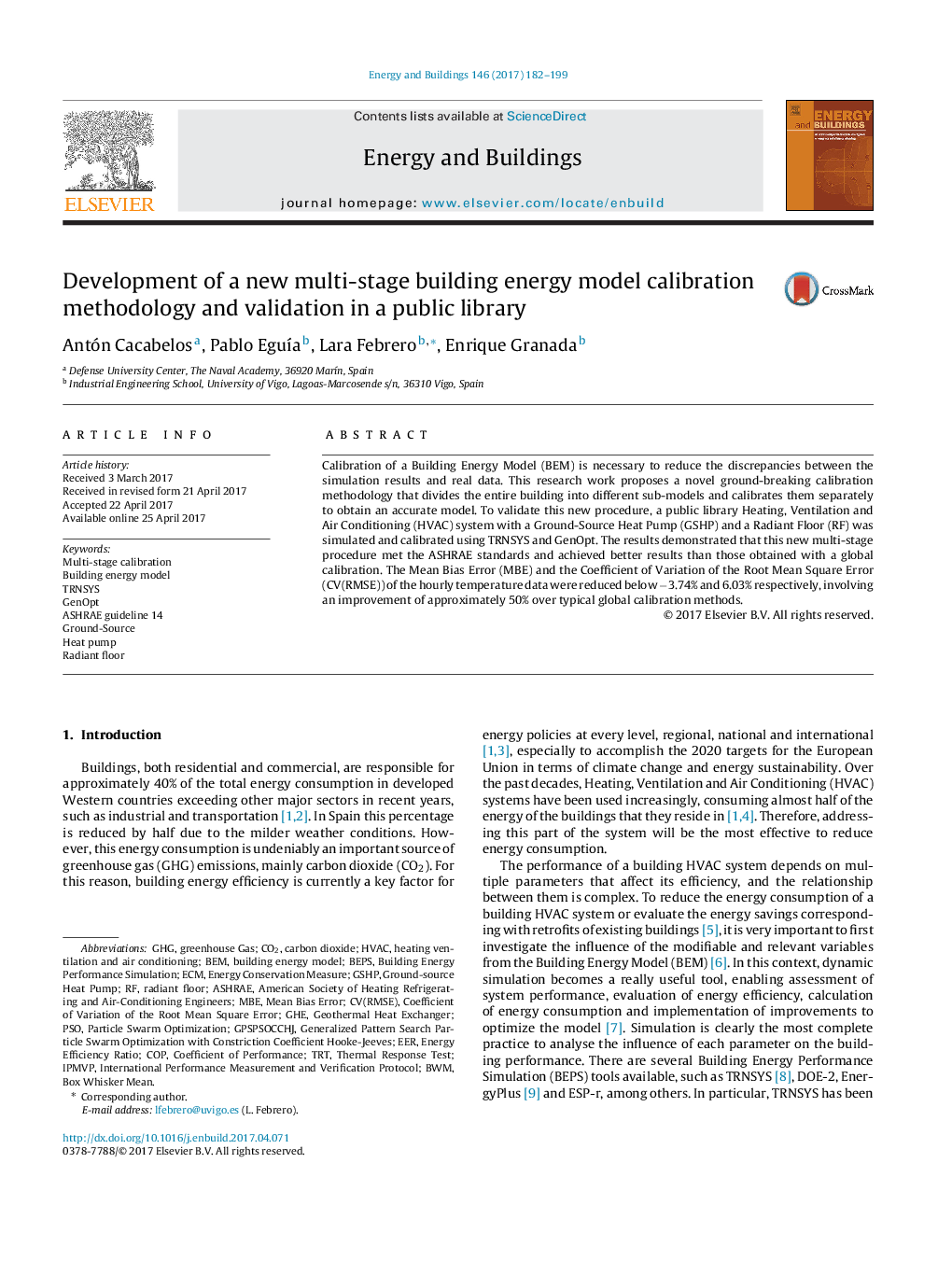| Article ID | Journal | Published Year | Pages | File Type |
|---|---|---|---|---|
| 4919224 | Energy and Buildings | 2017 | 18 Pages |
Abstract
Calibration of a Building Energy Model (BEM) is necessary to reduce the discrepancies between the simulation results and real data. This research work proposes a novel ground-breaking calibration methodology that divides the entire building into different sub-models and calibrates them separately to obtain an accurate model. To validate this new procedure, a public library Heating, Ventilation and Air Conditioning (HVAC) system with a Ground-Source Heat Pump (GSHP) and a Radiant Floor (RF) was simulated and calibrated using TRNSYS and GenOpt. The results demonstrated that this new multi-stage procedure met the ASHRAE standards and achieved better results than those obtained with a global calibration. The Mean Bias Error (MBE) and the Coefficient of Variation of the Root Mean Square Error (CV(RMSE)) of the hourly temperature data were reduced below â3.74% and 6.03% respectively, involving an improvement of approximately 50% over typical global calibration methods.
Keywords
IPMVPMBEBEPSGHGBWMASHRAETRNSYSGHECOPGSHPTRTInternational Performance Measurement and Verification ProtocolECMEERthermal response testEnergy conservation measureParticle swarm optimizationPSOHeating ventilation and air conditioningHVACMean bias errorGenOptBEMCarbon dioxideGround-sourceBuilding energy performance simulationcoefficient of performanceRadiant FloorGeothermal heat exchangerBuilding energy modelenergy efficiency ratioHeat pumpground-source heat pumpCO2Greenhouse gas
Related Topics
Physical Sciences and Engineering
Energy
Renewable Energy, Sustainability and the Environment
Authors
Antón Cacabelos, Pablo EguÃa, Lara Febrero, Enrique Granada,
